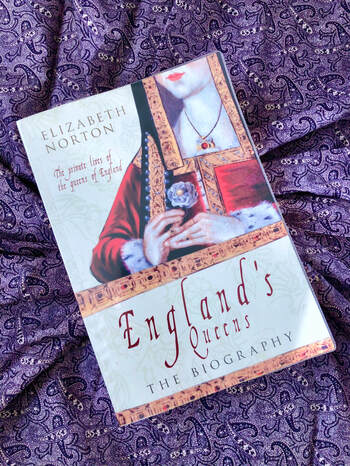The editor who reads too much |
|
In the Oxfam bookshop near the British Museum in Bloomsbury, I found a copy of England's Queens. Wow. There was so much I didn’t know! My knowledge of English history pre-1066 is woefully inadequate. I only recently learned that the Normans were actually descended from Vikings. I was fascinated to learn that “England in the early eleventh century was a stable and wealthy country,” and that Emma of Normandy, born in about 980 to Richard I, Duke of Normandy, and Gunnor, the daughter of “two noble Danes,” was making an excellent match with Ethelred II (Norton 2012, 35). (Side note: as a student, I never understood why Shakespeare sent Hamlet to Denmark. I hadn’t realized just how close, geographically speaking, the countries are, and that they shared this long and ancient history. You never stop learning! Norton has reshaped my understanding of life in early medieval England, formerly known as the Dark Ages.) Emma married King Ethelred II (the Unready) in 1002 but he died in 1016. The invading Vikings had taken over the country and she was forced to marry Cnut, who had defeated her stepson, Edmund, for the throne. Apparently, Emma had more power under King Cnut than she had under Ethelred II—her name appears on many charters, which is unusual for the time. Much of what we know about Emma comes from The Encomium Emmae Reginae, (Latin for Praise of Queen Emma) written around 1041 or 1042. It compliments Emma enough for modern readers to look at the text with a critical eye: how much of this was Emma’s own PR at work? Cnut died in 1035, and after some fighting, Harold Godwinson was proclaimed king in 1037 and Emma fled to exile in Flanders. In 1040 Emma’s son Harthacnut sailed from Denmark, where he was king, to rescue Emma. In a too-good-to-be-true scenario, Harold died that year, so Harthacnut became king. But he died in 1042. So Emma’s other son, whose father was Ethelred II, was declared king. That was Edward the Confessor. I’m sure you’ve heard of him. My first question was: why doesn’t this woman have a Netflix show? Did you know any of this? I’m a hardcore English-history nerd, and I knew none of it! In addition to Emma, I discovered the lives of Berengaria of Navarre, Henrietta Maria of France, Charlotte of Mecklenburg-Strelitz. Their husbands (Richard I, Charles I and George III) have all the renown (or infamy, as it may be), and Norton has done an amazing job of bringing these women out of the shadows. With few exceptions, queens rarely get the same examination or scholarship that kings do. Norton reveals the hidden, forgotten, or disregarded lives of the queens. Readers, this book is perfect if you want to get titbits of information on the queen of your choice. Though each queen’s entry is brief, they are thorough enough to give readers and researchers a well-informed starting point. This book is an excellent choice for readers interested in history and who want to know about more than just one queen or are looking for an overview of the lives of English queens. Writers, read this book if you want a brief introduction to the queen, dynasty or era of your interest. If you’re researching a specific historical era, it gives a nice background for each period, and this book is especially good for information of the lives of the lesser-known queens. Warning: it’s longer than it looks. Norton, Elizabeth. 2012. England’s Queens: The Biography. Stroud: Amberley Publishing. Title: England's Queens: The Biography
Author: Elizabeth Norton Genre: Nonfiction Publisher: Amberley Publishing Comments are closed.
|
Categories
All
Archives
July 2024
�
Posts on editing
Posts on books
Posts on publishing
Everything Else!
|

